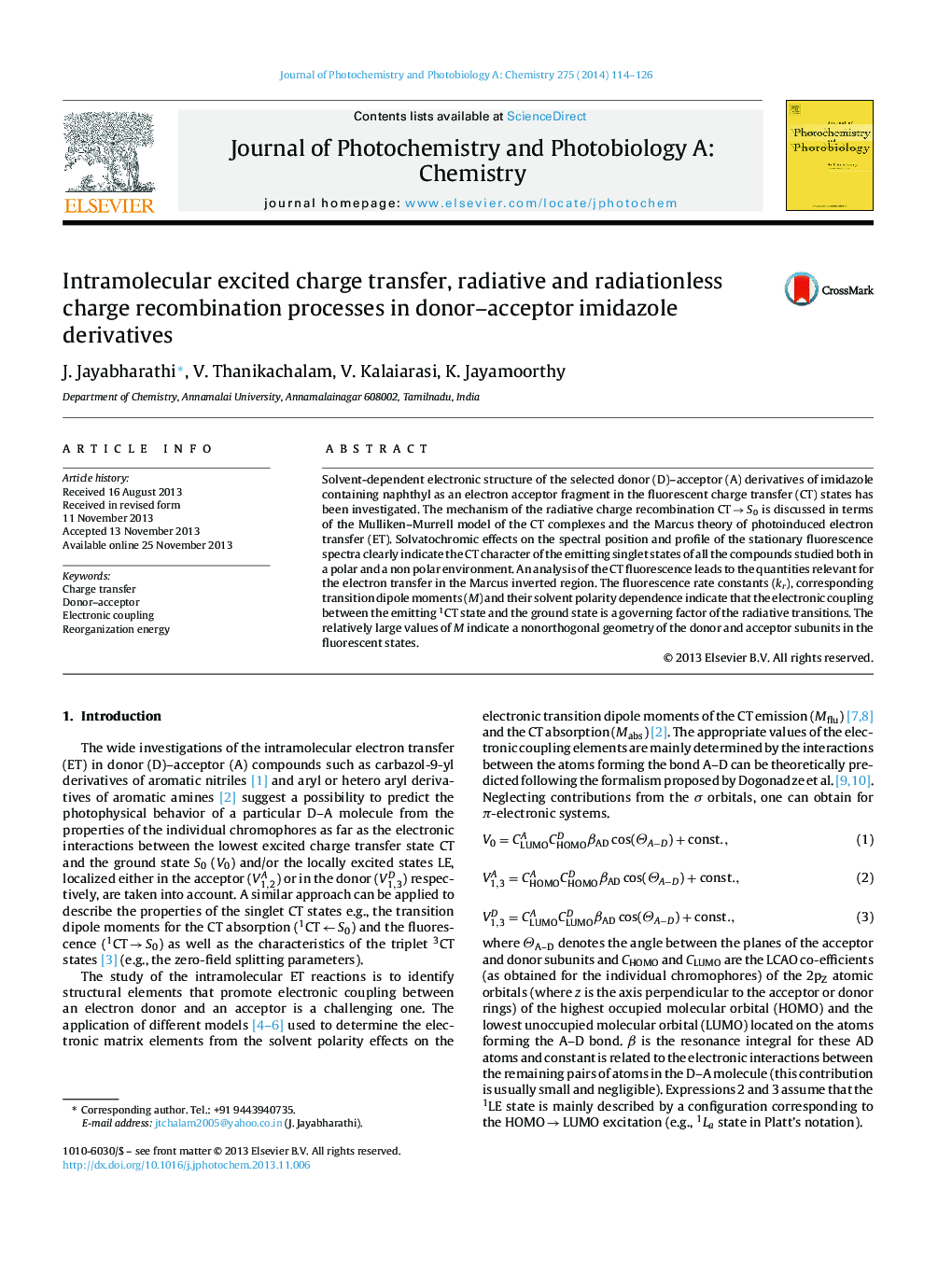| Article ID | Journal | Published Year | Pages | File Type |
|---|---|---|---|---|
| 26319 | Journal of Photochemistry and Photobiology A: Chemistry | 2014 | 13 Pages |
•Mechanism of the radiative charge recombination is discussed.•CT fluorescence leads to the electron transfer in the Marcus inverted region.•Solvatochromic effect has been discussed.
Solvent-dependent electronic structure of the selected donor (D)–acceptor (A) derivatives of imidazole containing naphthyl as an electron acceptor fragment in the fluorescent charge transfer (CT) states has been investigated. The mechanism of the radiative charge recombination CT → S0 is discussed in terms of the Mulliken–Murrell model of the CT complexes and the Marcus theory of photoinduced electron transfer (ET). Solvatochromic effects on the spectral position and profile of the stationary fluorescence spectra clearly indicate the CT character of the emitting singlet states of all the compounds studied both in a polar and a non polar environment. An analysis of the CT fluorescence leads to the quantities relevant for the electron transfer in the Marcus inverted region. The fluorescence rate constants (kr), corresponding transition dipole moments (M) and their solvent polarity dependence indicate that the electronic coupling between the emitting 1CT state and the ground state is a governing factor of the radiative transitions. The relatively large values of M indicate a nonorthogonal geometry of the donor and acceptor subunits in the fluorescent states.
Graphical abstractFigure optionsDownload full-size imageDownload as PowerPoint slide
